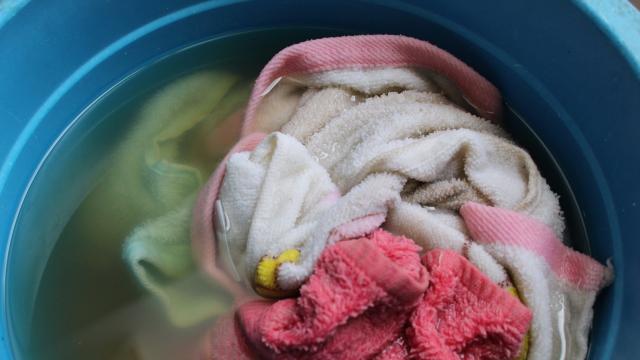Laundry stripping is a method of removing detergent buildup, as well as any fabric softeners, body oils, or hard-water minerals that have built up in your clothes over time. Although laundry stripping is a long-standing technique, it’s been in the spotlight again due to some viral social media videos. And although there are times when laundry stripping is necessary, it’s not as effective as people think — and in many instances, it can be avoided altogether.
For starters, the dark brown or grey that the water turns into during the stripping process isn’t dirt or grime, as most people think, but rather because the hot water causes the fabric dyes to run. On top of that, the need for stripping can often be avoided just by using less laundry detergent.
How to avoid the need for laundry stripping
The main reason laundry stripping is needed is because of detergent buildup on your clothes. However, most of this buildup happens in the first place because we’re all using way more detergent than is necessary.
For regular laundry detergent, all you need is a maximum of two tablespoons for a large load. That’s it. For small or medium loads, we need even less. The full capful that we’ve been trained to dump into the washing machine is way too much, and actually works against getting our clothes fully clean. Even if the instructions say you need to use more, you don’t. Keep in mind that they want you to buy more.
Excess suds prevent clothes from getting properly cleaned
When you put in too much laundry detergent, it creates an excess of suds that prevents clothes from rubbing against each other, which is needed to get them as clean as possible. For high efficiency washers, which sense water and suds levels, this can trigger additional rinse cycles that can add extra time, while also wasting additional water.
In addition to reducing the efficiency of your washing machine, too many suds also prevent the dirt and grime from getting fully washed out of the machine, which leads to it being re-deposited on clothes, and can create nasty odours in your machine. If you are noticing some bad smells or deposits on your washing machine, one way to get rid of them is to add some borax or washing soda to a regular cycle.
So, for starters, we all need to use less detergent so that our clothes can get properly clean in the first place.
When is laundry stripping a good idea?
If you do have detergent buildup because you’ve been using too much, instead of laundry stripping, you can soak your laundry in a mixture of vinegar and water. To do this, mix one cup vinegar for every one quart of water, and soak the clothes for up to an hour, then put the clothes through a normal wash cycle.
In addition to detergent, too much fabric softener or hard water can also cause residue buildup on your clothes. In these scenarios, laundry stripping can be an effective technique. It’s best to restrict your laundry load to whites, lights, and colour-fast clothes, and separate the whites from the colours, so you don’t accidentally dye your whites.
To do a round of laundry stripping, add ½ cup of borax and ½ cup of washing soda, along with a little detergent, to a tubful of hot water. Soak the laundry in this mixture for four hours, then wring the water out, and run it through a normal laundry cycle.
Then, once you’ve gotten all of that residue out, you’ll want to use less detergent moving forward, so you don’t need to do this all over again.

Leave a Reply
You must be logged in to post a comment.